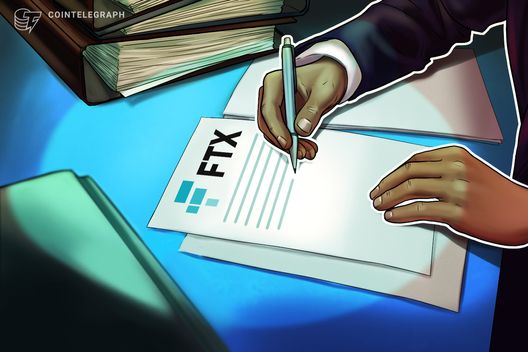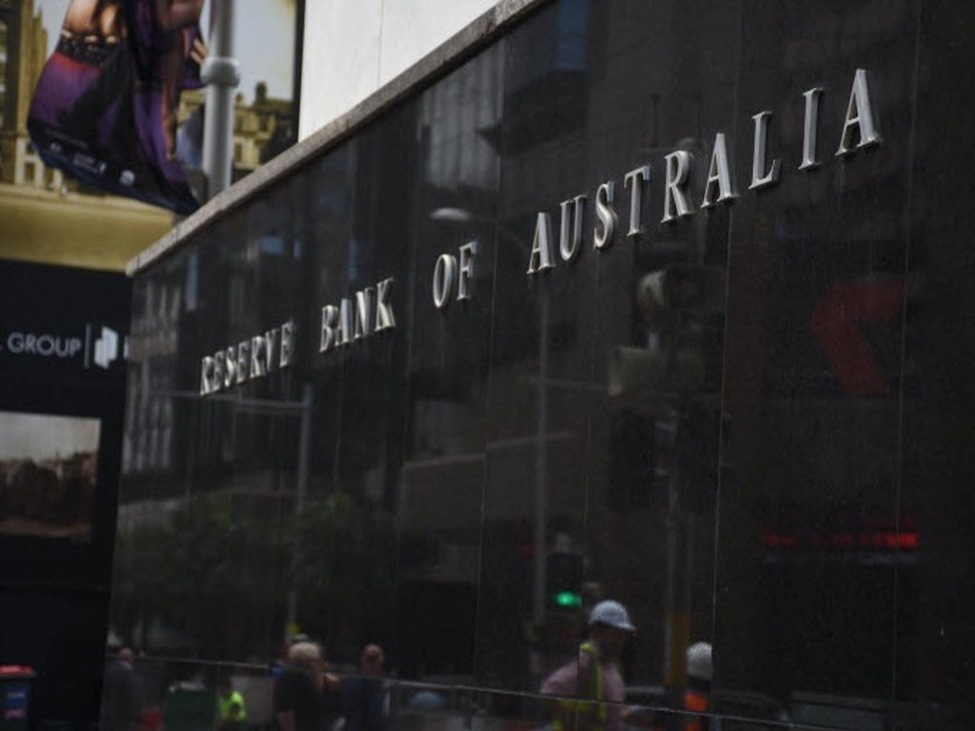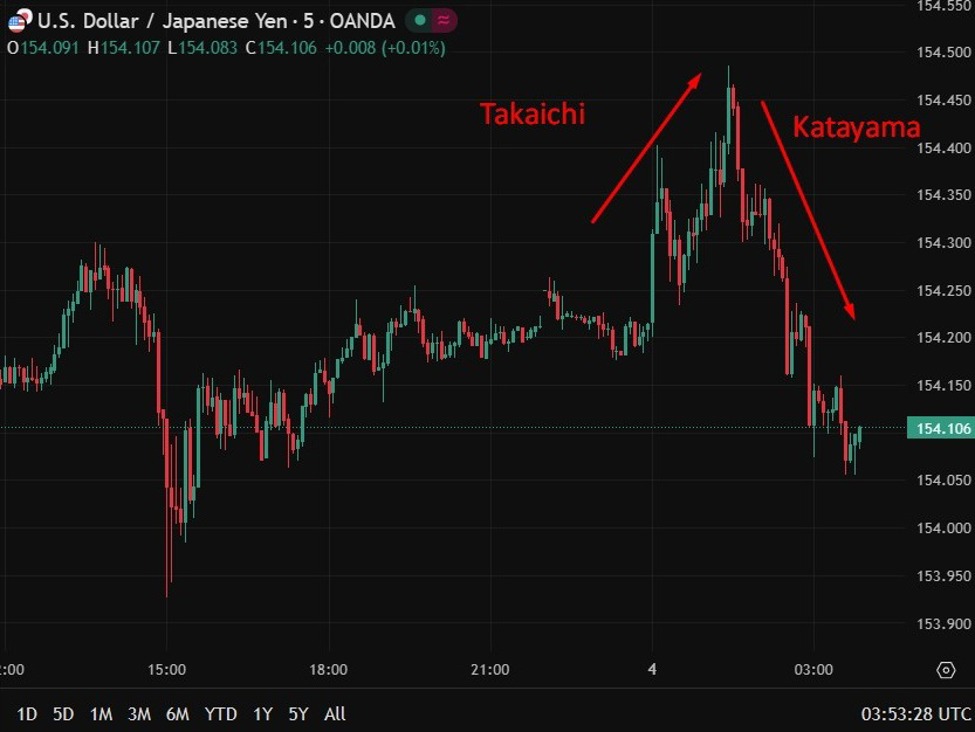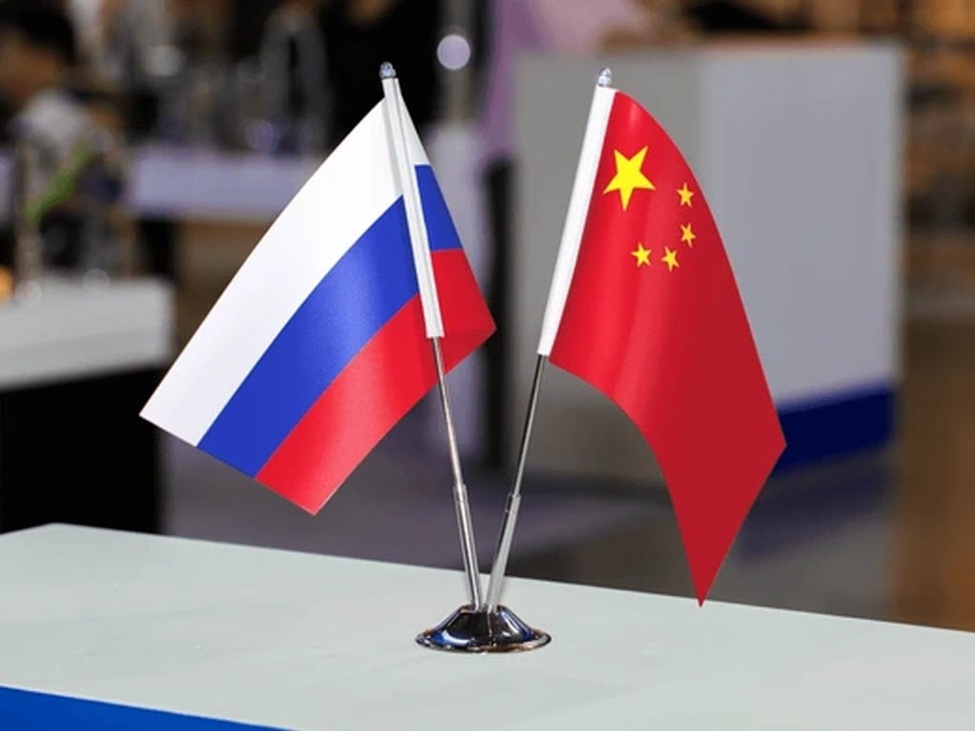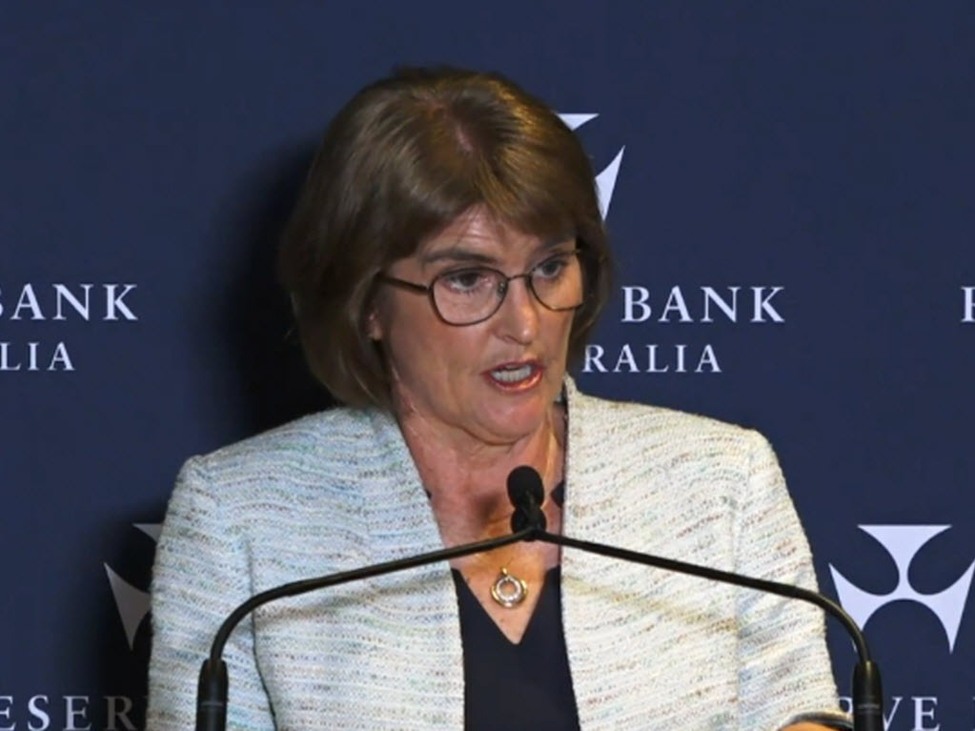David Sacks warns that the real threat AI poses is when it is used for government surveillance and information control. 🔗 Read Full Article 💡 DMK Insight David Sacks’ warning about AI’s potential for government surveillance is a critical reminder for traders to consider the broader implications of technology on market dynamics. As AI becomes more integrated into regulatory frameworks, it could lead to increased scrutiny of trading practices, particularly in volatile markets like crypto and forex. This could affect liquidity and trading strategies, especially for those relying on algorithmic trading or high-frequency strategies that might be flagged by regulatory bodies. Moreover, the intersection of AI and surveillance could create a chilling effect on market participants, leading to reduced trading volumes and increased volatility as traders react to perceived risks. If governments implement stricter controls on data and trading practices, we might see a shift in market sentiment, impacting asset prices across the board. Watch for any regulatory announcements or discussions around AI in trading, as these could serve as key indicators of market direction. In the coming weeks, keep an eye on how major exchanges and trading platforms respond to these concerns. Their strategies could reveal how they plan to navigate potential regulatory changes, which could be a significant factor in market movements. 📮 Takeaway Monitor regulatory developments around AI and trading practices, as they could significantly impact market liquidity and volatility in the coming weeks.
Stablecoins deserve better, and they’re finally getting it
Stablecoin settlement times vary wildly depending on their blockchain. Purpose-built payment chains must remain open, or they will repeat TradFi fragmentation. 🔗 Read Full Article 💡 DMK Insight Stablecoin settlement times are a critical factor for traders, especially in a fragmented market. As the article points out, the efficiency of stablecoin transactions hinges on the underlying blockchain technology. If these payment chains aren’t consistently operational, traders could face delays that disrupt trading strategies, particularly in high-frequency or day trading scenarios. This fragmentation mirrors issues seen in traditional finance (TradFi) and highlights the importance of liquidity and speed in crypto markets. Traders should keep an eye on which stablecoins are gaining traction on more efficient blockchains versus those stuck on slower networks. For instance, if a stablecoin on a high-performance blockchain starts to dominate, it could lead to a shift in trading volumes and liquidity preferences. Watch for any announcements regarding upgrades or changes in settlement protocols, as these could significantly impact trading dynamics in the short term. 📮 Takeaway Monitor stablecoin performance on different blockchains; inefficiencies could disrupt trading strategies, especially for high-frequency traders.
Postmortems can’t stop AI-powered crypto fraud
AI systems drive crypto fraud while the industry relies on outdated postmortems. Real-time transaction defense must become infrastructure. 🔗 Read Full Article 💡 DMK Insight Crypto fraud is evolving, and outdated defenses won’t cut it anymore. As AI systems become more sophisticated, so do the tactics used by fraudsters. Traders need to be aware that the industry’s reliance on postmortems—analyzing fraud after it happens—leaves them vulnerable. Real-time transaction defense mechanisms are essential for protecting assets and maintaining market integrity. This shift in focus could impact trading strategies significantly. If exchanges and wallets implement stronger real-time defenses, it may lead to increased trust and participation in the market, potentially driving prices up. Conversely, if fraud continues unchecked, it could lead to a loss of confidence, resulting in sell-offs. Traders should keep an eye on developments in security protocols and be ready to adjust their positions based on the effectiveness of these new measures. Watch for announcements from major exchanges regarding their security upgrades and be prepared for volatility in response to any breaches or improvements in security measures. 📮 Takeaway Monitor major exchanges for updates on real-time fraud defenses; effective measures could stabilize prices, while failures may trigger sell-offs.
FTX drops ‘restricted countries’ motion but warns it may refile
The FTX Recovery Trust dropped a motion to limit payouts to creditors in countries including China, which holds about $380 million in claims. 🔗 Read Full Article 💡 DMK Insight The FTX Recovery Trust’s move to limit payouts is a game changer for creditors, especially those in China holding significant claims. With $380 million at stake, this decision could spark a ripple effect across the crypto market, as it raises questions about the trust’s overall recovery strategy and the fairness of distributions. Traders should keep an eye on how this impacts sentiment around FTX’s assets and related cryptocurrencies. If creditors feel shortchanged, we might see increased volatility in the broader market, particularly in altcoins that have been linked to FTX. Here’s the thing: while limiting payouts might seem prudent from a recovery standpoint, it could also alienate a large group of stakeholders, potentially leading to legal challenges or further market instability. Watch for any updates on creditor reactions or legal proceedings, as these could significantly influence market dynamics in the coming weeks. 📮 Takeaway Monitor creditor reactions to the FTX Recovery Trust’s payout limitations, especially from Chinese stakeholders, as this could trigger volatility in related crypto assets.
Japan's Finance Minister Katayama says seeing one-sided rapid yen moves
Japan’s Finance Minister Katayama says seeing one-sided rapid yen moves closely watching FX moves with a high sense of urgency.—Earlier:Goldman: Yen intervention unlikely near 155, gradual recovery seen over timeJapan’s Takaichi: Boost revenue through growth, strengthen supply and infrastructure— USD/JPY has had a round trip today, with early lows around 154.20, a climb towards 154.50 Takaichi’s headlines before dribbling back to where we are as I update, around 154.22. This article was written by Eamonn Sheridan at investinglive.com. 🔗 Read Full Article
MUFG sees Bank of England (BoE) holding this week, December rate cut still base case
MUFG expects the Bank of England to hold rates steady at this week’s policy meeting, with its first cut likely in December, senior currency analyst Lee Hardman said.“Our base case is still a cut in December — I don’t think one softer CPI print is enough,” Hardman said, adding that by then policymakers will have more data and fiscal context following the government’s budget.He noted that while a surprise move this week “wouldn’t be a huge shock,” the probability remains low. If the BoE does hold fire, Hardman said, “we might get an initial rally in the pound, but it will likely fade as markets refocus on December.”—Market pricing is around 30% for a rate cut. Goldman Sachs and Barclays are among those expecting a cut:Barclays expects the Bank of England to cut interest rates this weekGoldman Sachs is expecting the Bank of England to cut its benchmark Bank Rate by 25bp to 3.75% at its meeting on Thursday November 6, 2025. This article was written by Eamonn Sheridan at investinglive.com. 🔗 Read Full Article 💡 DMK Insight The Bank of England’s likely decision to hold rates steady this week is crucial for forex traders. With MUFG forecasting a potential rate cut in December, traders should be mindful of how this could impact GBP pairs. A steady rate could stabilize the pound in the short term, but if inflation data continues to show weakness, expect volatility as market participants adjust their positions ahead of the anticipated cut. Keep an eye on the upcoming CPI releases; a softer print could trigger a shift in sentiment. Additionally, watch for how the euro and dollar react, as cross-currency flows might amplify GBP movements. The real story is how traders position themselves before December—will they hedge against a rate cut or double down on GBP strength? This week’s meeting is a pivotal moment to gauge market sentiment and prepare for potential shifts in the coming months. 📮 Takeaway Watch for the Bank of England’s policy meeting this week; a steady rate could signal stability, but prepare for volatility if inflation data weakens ahead of December’s expected cut.
RBA leaves its cash rate unchanged at 3.6%, as widely expected.
Bets for a Reserve Bank of Australia rate cut jumped after soft jobs data but were cut back again after inflation data came in hot. The consensus was for no rate cut today, which is what we have. From the statement accompanying the decision:The Reserve Bank of Australia kept the cash rate unchanged at its November meeting in a unanimous decision, citing rising inflation pressures but heightened uncertainty around the economic outlook.The central bank said inflation had recently picked up, and while part of the September quarter’s increase reflected temporary factors, the data also indicated underlying price pressures remain in the economy.The RBA Board said it judged it “appropriate to remain cautious” and would continue updating its outlook as new information emerges. It noted that domestic activity is recovering, but warned that the overall outlook “remains uncertain” in both directions.“The Board remains alert to the heightened level of uncertainty about the outlook in both directions,” the statement said, adding that policymakers remain focused on the RBA’s dual mandate of price stability and full employment, and “will do what it considers necessary” to achieve that goal.The Bank’s central forecast now sees underlying inflation rising above 3% in coming quarters before easing back to around 2.6% by 2027, consistent with the trajectory outlined in the November Statement on Monetary Policy.Labour market conditions remain “a little tight”, according to the statement, supporting wages and consumption even as the broader economy gradually cools.——————————Separately, the Reserve Bank of Australia sharply raised its core inflation forecasts in its November Statement on Monetary Policy, warning that price pressures will stay above target until the second half of 2026 and that the economy may be running hotter than previously thought.The central bank said recent data suggest “there could be more excess demand in the economy than earlier estimated”, with stronger household consumption, a faster rebound in house prices, and still-tight labour conditions all contributing to upside risks.The RBA now expects trimmed mean inflation to average 3.2% through mid-2026, easing to 2.7% by December 2026 and 2.6% by the end of 2027. It sees headline CPI peaking at 3.7% in June 2026, before moderating back within the 2–3% target band by late 2027.The upward revisions reflect what the RBA described as a “hump” in inflation stemming from the Q3 CPI jump, which it expects to persist until mid-2026.Policy assumptions underpinning the outlook include a cash rate of 3.6% through end-2025, drifting slightly lower to 3.4% in mid-2026 and 3.3% thereafter, suggesting the RBA expects to hold policy in mildly restrictive territory for longer.On growth and employment, the bank forecasts GDP expanding around 2% annually through 2027, with unemployment steady near 4.4% and wage growth easing from 3.4% in 2026 to about 3% by end-2027. It noted that financial conditions have eased since the August rate cut, with policy now “closer to neutral” but still acting to contain demand.The RBA also said global trade uncertainty has had limited impact on Australia so far, while domestic conditions appear firmer than expected, led by a rebound in consumption and property prices. — None of this is very dovish, and on balance its reasonable to say this is a tilt more hawkish from the Bank. The outlook now is only for a very … repeat very … gradual rate cut path ahead. There will be a long period of on hold before a cut. Inflation is forecast back to the mid rate only at the end of 2027. —Background to this:Reserve Bank of Australia meeting today – CBA sees RBA on hold as inflation broadensdata suggest price pressures remain sticky, keeping inflation just above the Reserve Bank of Australia’s 2–3% target band.RBA preview: “material miss” on inflation erases rate cut betsNewsquawk Week Ahead: US ISM PMIs, ADP, Supreme Court Tariff Hearing, RBA, BoE, OPEC-8Preview – RBA to hold rates as sticky inflation delays next cut to 2026 – Reuters poll —Still to come is Reserve Bank of Australia Governor Bullock’s press conference, due to begin at 3.30 pm Sydney time:0430 GMT2330 US Eastern time This article was written by Eamonn Sheridan at investinglive.com. 🔗 Read Full Article 💡 DMK Insight The RBA’s decision to hold rates steady despite fluctuating job and inflation data is a critical moment for traders. With soft jobs data initially sparking speculation for a rate cut, the subsequent hot inflation figures have shifted sentiment back to a wait-and-see approach. This volatility highlights the delicate balance the RBA is trying to maintain, and traders need to watch how this impacts the Australian dollar and related forex pairs. If inflation continues to surprise to the upside, we could see renewed pressure for rate hikes, which would strengthen the AUD against its peers. Conversely, if economic indicators trend downward, the RBA may be forced to reconsider its stance. Key levels to monitor include the AUD/USD around recent highs and lows, as well as broader market reactions to upcoming economic releases. Keep an eye on the next inflation report; it could be a game changer for rate expectations and market positioning. 📮 Takeaway Watch the AUD/USD closely; a shift in inflation data could trigger significant moves in the forex market.
investingLive Asia-Pacific FX news wrap: RBA holds. USD dollar firmer, but yen recovers
RBA leaves its cash rate unchanged at 3.6%, as widely expected.MUFG sees Bank of England (BoE) holding this week, December rate cut still base caseJapan’s Finance Minister Katayama says seeing one-sided rapid yen movesGoldman: Yen intervention unlikely near 155, gradual recovery seen over timeStandard Chartered bullish on global equities despite valuations, U.S. job concernsChina starts trial production at world’s first flying car factory in GuangzhouChina offers big power subsidies to boost local AI chips at ByteDance, Alibaba, TencentJapan’s Takaichi: Boost revenue through growth, strengthen supply and infrastructurePBOC to boost policy support, expand offshore yuan market and cross-border paymentsUS Treas Sec Bessent says he’ll attend Supreme Court tariff caseChina’s He Lifeng vows to stabilise global trade, deepen cooperation amid new challengesPBOC sets USD/ CNY central rate at 7.0885 (vs. estimate at 7.1226)China, Russia agree to deepen all-round cooperation under strategic partnershipJapan final manufacturing PMI for October 48.2 (down from 48.5 in September)USD up, equity indexes slipStandard Chartered: BTD, Gold pullback a buy as drivers stay firm, $4,500 still the targetPanama Canal sees 2026 trade slowdown, but U.S.–Asia LPG traffic hits record highsRabobank: US productivity strength to support dollar, but global recovery to limit upsideFed officials divided on December rate cut – inflation worries persist, labour risks mountSouth Korea to restructure steel sector hit by U.S., EU tariffs and oversupply pressuresSouth Korea inflation hits 2.4%, fastest rise since mid-2024, higher utilities & servicesICYMI: OpenAI sigs $38 billion Amazon cloud deal to boost Nvidia-powered AI infrastructureEther slides below $3,600 after $100 million DeFi hack deepens crypto sell-offEU’s Šefčovič: Nexperia progress, urges lasting chip-supply stability, no export barriersUBS sees equity bull market extending despite Fed uncertainty and high valuationsAUD, ASX and Aussie bond traders heads up – it’s a partial holiday in Australia today.investingLive Americas market news wrap: ISM manufacturing disappointsAsian markets saw a firm U.S. dollar, softer regional currencies, and a modest risk-off tone following several key policy signals.In Japan, Prime Minister Sanae Takaichi said the government will boost tax revenue through economic growth rather than rate hikes, pledging to strengthen supply capacity and invest in services and infrastructure. The yen briefly weakened towards 154.50, its lowest since mid-February, before Finance Minister Katayama’s warning on “one-sided” moves helped it rebound below 154.10.The greenback’s strength weighed broadly across G10 and Asian FX. The euro fell to its lowest since August, while the Singapore dollar dropped to its weakest since May 12.The Reserve Bank of Australia delivered an on-hold decision, as expected, but its tone leaned hawkish. Policymakers said inflation has picked up and that underlying pressures persist, even if some of the Q3 rise was temporary. Core inflation is expected to remain above 3% into 2026.In its Statement on Monetary Policy, the RBA lifted inflation forecasts sharply, saying price growth will stay above target until the second half of 2026. The Bank assumes a cash rate of 3.6% through 2025, signalling a prolonged hold in mildly restrictive territory.AUD/USD drifted lower in line with the stronger dollar and failed to hold a small bounce after the RBA release.Elsewhere, South Korea’s CPI rose 2.4% y/y, the fastest since July 2024, driven by food and utility prices, while Japan’s October manufacturing PMI dropped to 48.2, its weakest in 19 months.From China, the PBOC pledged to strengthen policy support and expand RMB cross-border payment systems, while deepening Hong Kong’s offshore yuan market — reinforcing its commitment to economic stabilisation and currency internationalisation.In crypto, Ether slumped nearly 9%, briefly breaching $3,600, after a $100 million DeFi hack on Balancer deepened selling pressure. The token remains about 25% below its August high, as traders adjust to a more cautious macro backdrop and fewer Fed-cut expectations. Asia-Pac stocks:Japan (Nikkei 225) -0.36%Hong Kong (Hang Seng) +0.25% Shanghai Composite -0.19%Australia (S&P/ASX 200) -0.68% This article was written by Eamonn Sheridan at investinglive.com. 🔗 Read Full Article 💡 DMK Insight The RBA’s decision to keep rates at 3.6% signals stability, but here’s the kicker: it sets the stage for potential volatility in forex markets. With the BoE likely to hold rates as well, traders should keep an eye on the GBP/AUD pair, especially if the yen continues its rapid moves. Japan’s Finance Minister’s comments about one-sided yen fluctuations hint at possible intervention, but Goldman Sachs suggests that intervention won’t happen until the yen hits 155. This creates a window for traders to capitalize on potential swings in the JPY pairs, particularly if the yen starts to recover gradually as predicted by Standard Chartered. Watch for key resistance levels around 155 for the yen and 1.90 for GBP/AUD. The next few days could be crucial as these central bank decisions unfold, impacting sentiment across global equities and forex markets. 📮 Takeaway Monitor GBP/AUD for potential volatility and watch the yen closely around the 155 level for intervention signals.
China president Xi reaffirms pledge for cooperation, close communication with Russia
China, Russia should steadily expand mutual investmentShould create new growth points for cooperationTo cooperate in areas such as AI, digital economy, and green developmentTo also carry out cooperation in traditional fields such as energy, agricultureIt’s all about the optics. After meeting with Trump last week, Xi is making it known that China’s ties with Russia are still very much clear for all to see. As mentioned last week, nothing has really changed. Beijing will step up some agriculture purchases to appease Trump in the short-term but we’ve seen before how they will slowly lax on that commitment. This article was written by Justin Low at investinglive.com. 🔗 Read Full Article 💡 DMK Insight China and Russia’s push for mutual investment is more than just a geopolitical play; it signals potential shifts in global economic alliances. As these two nations focus on sectors like AI and green development, traders should consider how this could impact commodities and tech stocks. Increased cooperation in traditional fields like energy could lead to volatility in oil and gas markets, especially if sanctions or trade barriers are affected. For forex traders, this could mean increased activity in the yuan and ruble as these nations strengthen their economic ties. Look for potential currency fluctuations as they announce specific projects or partnerships. The real story is how this could ripple through global markets, affecting not just bilateral trade but also the broader economic landscape. Keep an eye on any announcements regarding specific investments or projects, as these could serve as catalysts for market movements. 📮 Takeaway Watch for announcements on specific China-Russia projects; they could impact commodities and forex markets, especially the yuan and ruble.
RBA governor Bullock: We did not considering cutting rates
We discussed holding and outlook for policy, being cautiousThere are mixed signals on the tightness of financial conditionsWe still got a little bit of tightness that will take a little bit of heat out of the economy to bring inflation back downIt’s possible that there’s no more rate cuts but also possible that there will be some moreBut as said before, we didn’t go up as high (on rates) so we don’t have to come down as farA rate hike was not discussedWe have judged that things are restrictive but the closer we get to neutral, the less we knowThe board is definitely targeting 2.5% mark for inflation, “just below 3%” is not good enoughIt’s an open question about whether there are many more rate cuts to comeWe do not give forward guidanceThere is still much uncertainty on inflationWe are watching things very carefullyWe think we are close to neutral and will be going meeting by meeting to see if whether outlook is still reasonableThe board does not have a bias on monetary policyHer remarks certainly don’t sound like they’re in a rush to be cutting again next. Barring any major surprises in the data, we shouldn’t see much of a change to the RBA outlook going into the turn of the year. The next key quarterly inflation report will only fall on 28 January 2026, so don’t expect the RBA to feel compelled to cut in December. As things stand, markets are pricing in ~92% odds of no change for that. This article was written by Justin Low at investinglive.com. 🔗 Read Full Article 💡 DMK Insight Mixed signals on financial conditions are raising eyebrows, and here’s why that matters: Traders should be paying attention to the potential implications of tight financial conditions on market liquidity and economic growth. The current environment suggests that while inflation is still a concern, the possibility of further rate cuts may be off the table. This could lead to a more cautious approach from investors, particularly in equities and risk assets. If the economy feels the pinch from tighter conditions, we might see a shift in sentiment that could impact asset classes like crypto and forex, especially if traders start to hedge against potential downturns. On the flip side, if inflation shows signs of cooling, it could create a window for opportunistic buying in undervalued sectors. Keep an eye on key economic indicators like CPI and PPI in the coming weeks, as these will provide clearer signals on inflation trends. Watch for any significant moves in the dollar index, as a stronger dollar could put pressure on commodities and emerging markets. The next few weeks will be crucial for setting up trading strategies based on these evolving conditions. 📮 Takeaway Monitor key economic indicators like CPI and PPI closely; they could dictate market sentiment and trading strategies in the coming weeks.

 Bitcoin
Bitcoin  Ethereum
Ethereum  Tether
Tether  XRP
XRP  Wrapped SOL
Wrapped SOL  USDC
USDC  TRON
TRON  Lido Staked Ether
Lido Staked Ether  Dogecoin
Dogecoin 


